Sulaiman Aburakhia
Joint Instantaneous Amplitude-Frequency Analysis of Vibration Signals for Vibration-Based Condition Monitoring of Rolling Bearings
May 14, 2024Abstract:Vibrations of damaged bearings are manifested as modulations in the amplitude of the generated vibration signal, making envelope analysis an effective approach for discriminating between healthy and abnormal vibration patterns. Motivated by this, we introduce a low-complexity method for vibration-based condition monitoring (VBCM) of rolling bearings based on envelope analysis. In the proposed method, the instantaneous amplitude (envelope) and instantaneous frequency of the vibration signal are jointly utilized to facilitate three novel envelope representations: instantaneous amplitude-frequency mapping (IAFM), instantaneous amplitude-frequency correlation (IAFC), and instantaneous energy-frequency distribution (IEFD). Maintaining temporal information, these representations effectively capture energy-frequency variations that are unique to the condition of the bearing, thereby enabling the extraction of discriminative features with high sensitivity to variations in operational conditions. Accordingly, six new highly discriminative features are engineered from these representations, capturing and characterizing their shapes. The experimental results show outstanding performance in detecting and diagnosing various fault types, demonstrating the effectiveness of the proposed method in capturing unique variations in energy and frequency between healthy and faulty bearings. Moreover, the proposed method has moderate computational complexity, meeting the requirements of real-time applications. Further, the Python code of the proposed method is made public to support collaborative research efforts and ensure the reproducibility of the presented work
On the Intersection of Signal Processing and Machine Learning: A Use Case-Driven Analysis Approach
Mar 25, 2024



Abstract:Recent advancements in sensing, measurement, and computing technologies have significantly expanded the potential for signal-based applications, leveraging the synergy between signal processing and Machine Learning (ML) to improve both performance and reliability. This fusion represents a critical point in the evolution of signal-based systems, highlighting the need to bridge the existing knowledge gap between these two interdisciplinary fields. Despite many attempts in the existing literature to bridge this gap, most are limited to specific applications and focus mainly on feature extraction, often assuming extensive prior knowledge in signal processing. This assumption creates a significant obstacle for a wide range of readers. To address these challenges, this paper takes an integrated article approach. It begins with a detailed tutorial on the fundamentals of signal processing, providing the reader with the necessary background knowledge. Following this, it explores the key stages of a standard signal processing-based ML pipeline, offering an in-depth review of feature extraction techniques, their inherent challenges, and solutions. Differing from existing literature, this work offers an application-independent review and introduces a novel classification taxonomy for feature extraction techniques. Furthermore, it aims at linking theoretical concepts with practical applications, and demonstrates this through two specific use cases: a spectral-based method for condition monitoring of rolling bearings and a wavelet energy analysis for epilepsy detection using EEG signals. In addition to theoretical contributions, this work promotes a collaborative research culture by providing a public repository of relevant Python and MATLAB signal processing codes. This effort is intended to support collaborative research efforts and ensure the reproducibility of the results presented.
On the Peak-to-Average Power Ratio of Vibration Signals: Analysis and Signal Companding for an Efficient Remote Vibration-Based Condition Monitoring
Oct 03, 2023



Abstract:Vibration-based condition monitoring (VBCM) is widely utilized in various applications due to its non-destructive nature. Recent advancements in sensor technology, the Internet of Things (IoT), and computing have enabled the facilitation of reliable distributed VBCM where sensor nodes are deployed at multiple locations and connected wirelessly to monitoring centers. However, sensor nodes are typically constrained by limited power resources, necessitating control over the peak-to-average power ratio (PAPR) of the generated vibration signals. Effective control of PAPR is crucial to prevent nonlinear distortion and reduce power consumption within the node. Additionally, avoiding nonlinear distortion in the vibration signal and preserving its waveform is essential to ensure the reliability of condition monitoring. This paper conducts an in-depth analysis of the PAPR of vibration signals in VBCM systems, evaluates the impact of nonlinear power amplification on the system performance, and proposes a lightweight autoencoder-based signal companding scheme to control the PAPR to improve power efficiency and mitigate the impact of nonlinear distortion. The proposed scheme employs a lightweight reconstruction autoencoder with a compression-based activation function in the source to compress the vibration signals and avoid increasing the average power of the compressed signal. In the destination, the proposed scheme uses a denoising-expansion autoencoder to expand the compressed signals while minimizing noise enhancement during the expansion process. The experimental results demonstrate the effectiveness of the proposed companding scheme in preventing nonlinear distortion, improving the efficiency of power amplification in the source, and restoring the PAPR characteristics in the destination while avoiding the undesired effect of noise expansion.
Similarity-Based Predictive Maintenance Framework for Rotating Machinery
Dec 30, 2022



Abstract:Within smart manufacturing, data driven techniques are commonly adopted for condition monitoring and fault diagnosis of rotating machinery. Classical approaches use supervised learning where a classifier is trained on labeled data to predict or classify different operational states of the machine. However, in most industrial applications, labeled data is limited in terms of its size and type. Hence, it cannot serve the training purpose. In this paper, this problem is tackled by addressing the classification task as a similarity measure to a reference sample rather than a supervised classification task. Similarity-based approaches require a limited amount of labeled data and hence, meet the requirements of real-world industrial applications. Accordingly, the paper introduces a similarity-based framework for predictive maintenance (PdM) of rotating machinery. For each operational state of the machine, a reference vibration signal is generated and labeled according to the machine's operational condition. Consequentially, statistical time analysis, fast Fourier transform (FFT), and short-time Fourier transform (STFT) are used to extract features from the captured vibration signals. For each feature type, three similarity metrics, namely structural similarity measure (SSM), cosine similarity, and Euclidean distance are used to measure the similarity between test signals and reference signals in the feature space. Hence, nine settings in terms of feature type-similarity measure combinations are evaluated. Experimental results confirm the effectiveness of similarity-based approaches in achieving very high accuracy with moderate computational requirements compared to machine learning (ML)-based methods. Further, the results indicate that using FFT features with cosine similarity would lead to better performance compared to the other settings.
A Hybrid Method for Condition Monitoring and Fault Diagnosis of Rolling Bearings With Low System Delay
Aug 11, 2022


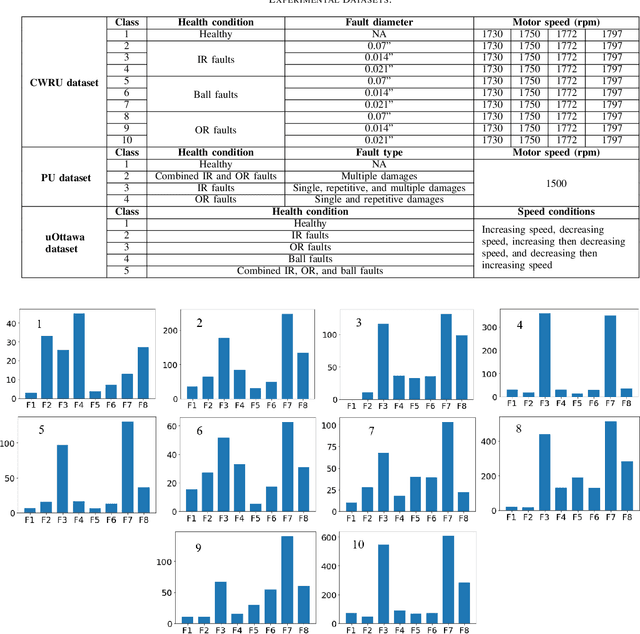
Abstract:Vibration-based condition monitoring techniques are commonly used to detect and diagnose failures of rolling bearings. Accuracy and delay in detecting and diagnosing different types of failures are the main performance measures in condition monitoring. Achieving high accuracy with low delay improves system reliability and prevents catastrophic equipment failure. Further, delay is crucial to remote condition monitoring and time-sensitive industrial applications. While most of the proposed methods focus on accuracy, slight attention has been paid to addressing the delay introduced in the condition monitoring process. In this paper, we attempt to bridge this gap and propose a hybrid method for vibration-based condition monitoring and fault diagnosis of rolling bearings that outperforms previous methods in terms of accuracy and delay. Specifically, we address the overall delay in vibration-based condition monitoring systems and introduce the concept of system delay to assess it. Then, we present the proposed method for condition monitoring. It uses Wavelet Packet Transform (WPT) and Fourier analysis to decompose short-duration input segments of the vibration signal into elementary waveforms and obtain their spectral contents. Accordingly, energy concentration in the spectral components-caused by defect induced transient vibrations-is utilized to extract a small number of features with high discriminative capabilities. Consequently, Bayesian optimization-based Random Forest (RF) algorithm is used to classify healthy and faulty operating conditions under varying motor speeds. The experimental results show that the proposed method can achieve high accuracy with low system delay.
An Attention-based ConvLSTM Autoencoder with Dynamic Thresholding for Unsupervised Anomaly Detection in Multivariate Time Series
Jan 23, 2022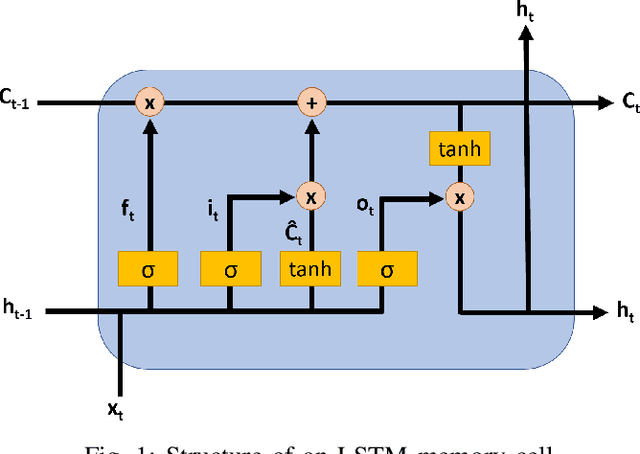
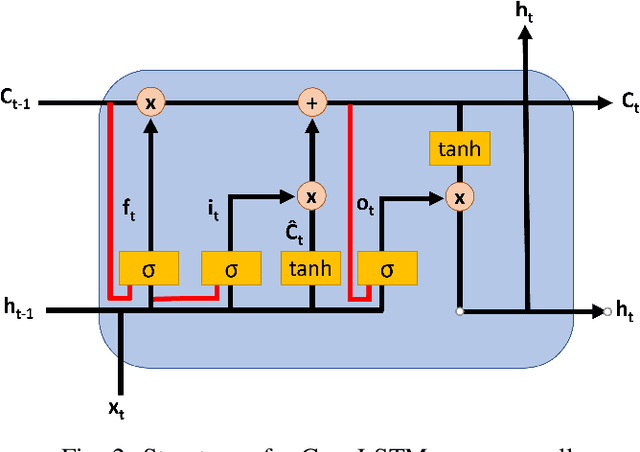
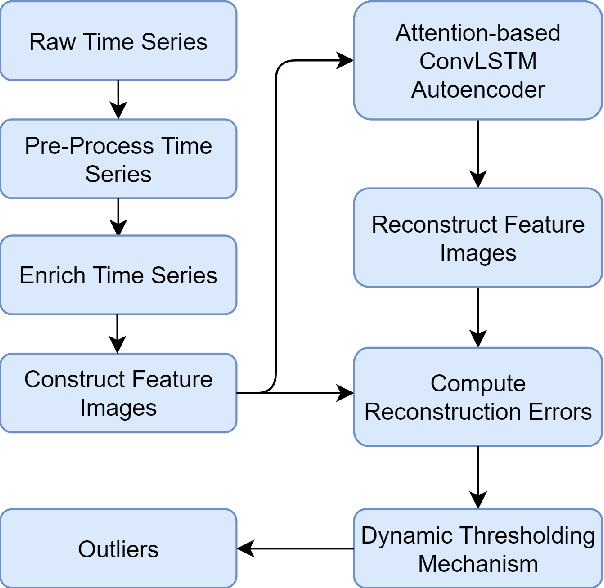
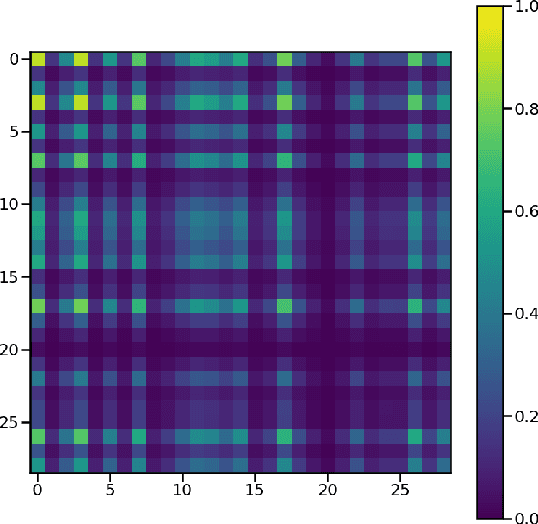
Abstract:As a substantial amount of multivariate time series data is being produced by the complex systems in Smart Manufacturing, improved anomaly detection frameworks are needed to reduce the operational risks and the monitoring burden placed on the system operators. However, building such frameworks is challenging, as a sufficiently large amount of defective training data is often not available and frameworks are required to capture both the temporal and contextual dependencies across different time steps while being robust to noise. In this paper, we propose an unsupervised Attention-based Convolutional Long Short-Term Memory (ConvLSTM) Autoencoder with Dynamic Thresholding (ACLAE-DT) framework for anomaly detection and diagnosis in multivariate time series. The framework starts by pre-processing and enriching the data, before constructing feature images to characterize the system statuses across different time steps by capturing the inter-correlations between pairs of time series. Afterwards, the constructed feature images are fed into an attention-based ConvLSTM autoencoder, which aims to encode the constructed feature images and capture the temporal behavior, followed by decoding the compressed knowledge representation to reconstruct the feature images input. The reconstruction errors are then computed and subjected to a statistical-based, dynamic thresholding mechanism to detect and diagnose the anomalies. Evaluation results conducted on real-life manufacturing data demonstrate the performance strengths of the proposed approach over state-of-the-art methods under different experimental settings.
A Transfer Learning Framework for Anomaly Detection Using Model of Normality
Nov 12, 2020

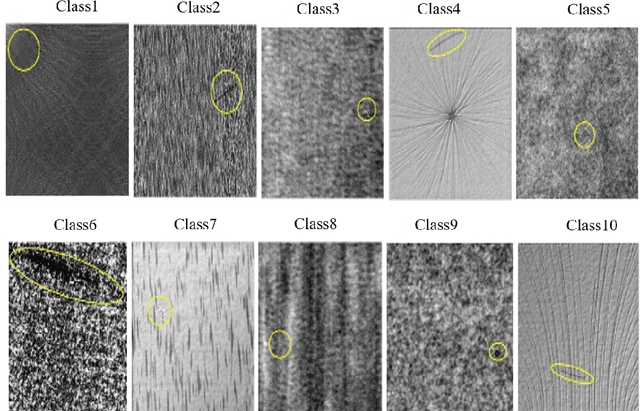
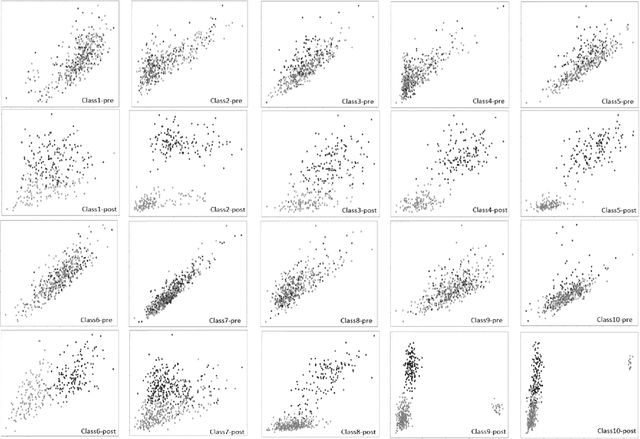
Abstract:Convolutional Neural Network (CNN) techniques have proven to be very useful in image-based anomaly detection applications. CNN can be used as deep features extractor where other anomaly detection techniques are applied on these features. For this scenario, using transfer learning is common since pretrained models provide deep feature representations that are useful for anomaly detection tasks. Consequentially, anomaly can be detected by applying similarly measure between extracted features and a defined model of normality. A key factor in such approaches is the decision threshold used for detecting anomaly. While most of the proposed methods focus on the approach itself, slight attention has been paid to address decision threshold settings. In this paper, we tackle this problem and propose a welldefined method to set the working-point decision threshold that improves detection accuracy. We introduce a transfer learning framework for anomaly detection based on similarity measure with a Model of Normality (MoN) and show that with the proposed threshold settings, a significant performance improvement can be achieved. Moreover, the framework has low complexity with relaxed computational requirements.
Distance-Based Anomaly Detection for Industrial Surfaces Using Triplet Networks
Nov 10, 2020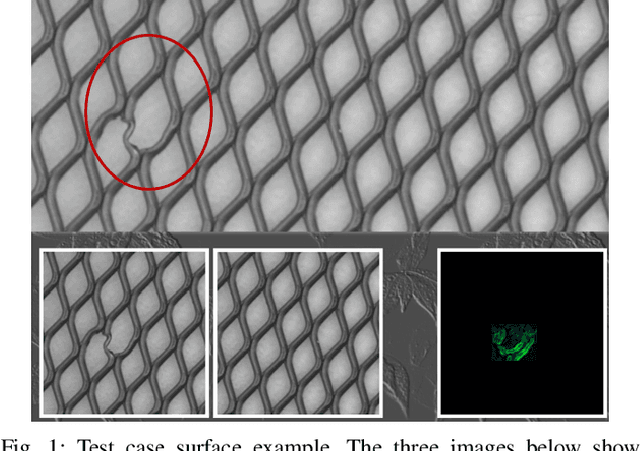
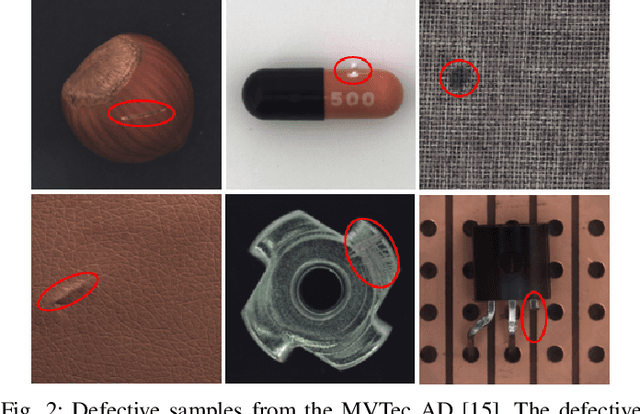
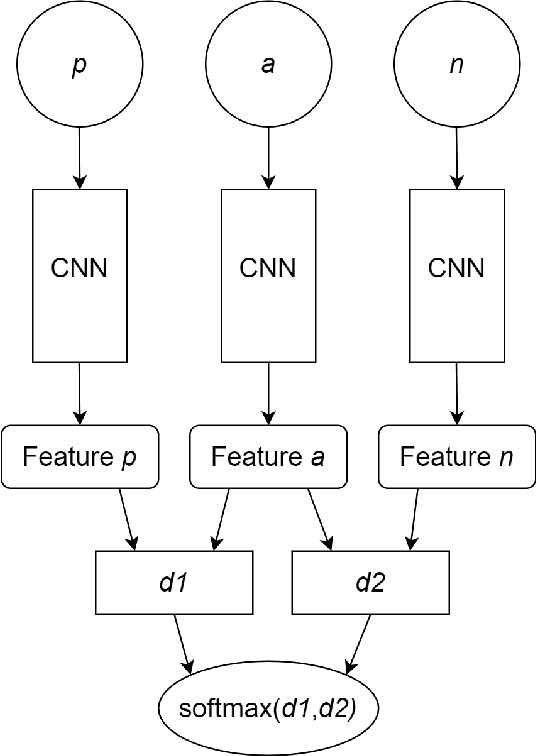
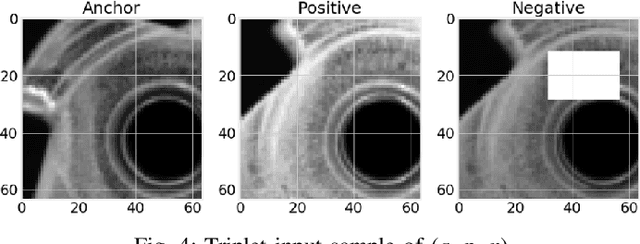
Abstract:Surface anomaly detection plays an important quality control role in many manufacturing industries to reduce scrap production. Machine-based visual inspections have been utilized in recent years to conduct this task instead of human experts. In particular, deep learning Convolutional Neural Networks (CNNs) have been at the forefront of these image processing-based solutions due to their predictive accuracy and efficiency. Training a CNN on a classification objective requires a sufficiently large amount of defective data, which is often not available. In this paper, we address that challenge by training the CNN on surface texture patches with a distance-based anomaly detection objective instead. A deep residual-based triplet network model is utilized, and defective training samples are synthesized exclusively from non-defective samples via random erasing techniques to directly learn a similarity metric between the same-class samples and out-of-class samples. Evaluation results demonstrate the approach's strength in detecting different types of anomalies, such as bent, broken, or cracked surfaces, for known surfaces that are part of the training data and unseen novel surfaces.
 Add to Chrome
Add to Chrome Add to Firefox
Add to Firefox Add to Edge
Add to Edge